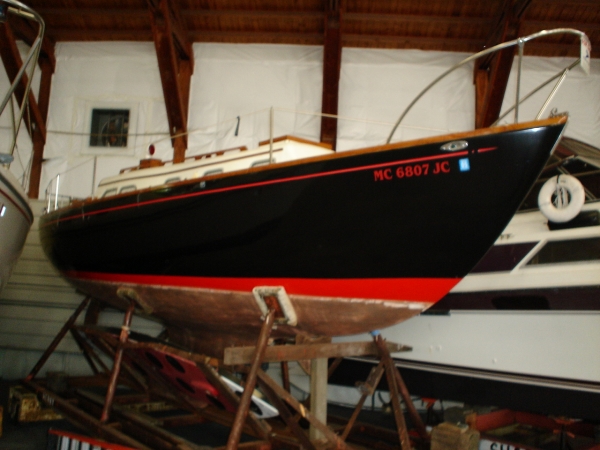This one I may know more about
The change came from 2 key areas-as I see them: As yacht design progressed and finer, deeper keels became the norm, it was not possible to have proper keels with the old type of construction-the newer keels were molded in lead and bolted onto the hull. With the 2 halve method the keels were too fat.
The other reason was part of the structural evolution-modern boats needed these kinds of keels, and the idea of the TAFG-a structural grid intended to tie in the rigging, deck and keel loads to reduce point loading (remember too, that newer boats have much higher loads due to the inboard chainplates, traller rigs, etc) and make for a more rigid hull-which results in a faster hull-
The TAFG was Ericson's method of achieving a strong, yet reasonably light hull.
Tumblehome.....sucks! But seriously, the tumblehome you see in the E-37 as a big example-had nothing to do with good shapes, or construction-it was aberration of the IOR formula-a trick to make the boat "look" (to the measurement process) fatter than it was-this formula took measurements at certain defined points, and determined the speed potential based on length, WL length, beam, WL beam, displacement, ballast, sail area, etc. These "points" formed a "connect the dots" hull shape-from which the formula determined the potential speed. The trick for designers was to make the boat sail faster than it "should" based on these measurement points-this is one reason you see many older IOR boats have a pinched-in shape at the waterline under the stern-by making the WL beam narrow at this location-the rule sees this for what it should be-less form stability, sailing length, etc, and indicates a "slower" boat-but aft and above this-where there was no actual measurement, the designers tried to smooth out the shape and negate the slowing aspects of this-with varying degrees of success.
The rule changed over time, and the big tumblehome look was prevalent during the late 70's. IOR boats in the 80's had much less. Some folks like this look, but it does nothing to enhance sailing qualities-quite the opposite! But for boats designed to compete under this formula, it was a necessary evil. This is why some models have this and some don't-it depended on what that design was intended to do-
Hope this helps!
S



